The End of the Wanderings
December 31st, 2010Well, that’s it.
Almost eight years to the day since we got together and began backpacking around the world, we arrived in Geneva at the start of October, put our backpacks away, and began our new lives as settled professionals (or at least, Wendy began her new life as a settled professional; I began mine as a settled househusband and an unsettled French student).
Needless to say, we are incredibly thankful to have had the opportunity to visit so many places; by my estimate, we’ve been travelling for just over half of our eight years together (more than four years!), and that doesn’t include the travelling we did on our own before we met each other. We realise we have been extremely lucky to have stumbled into two different types of short-term jobs (tour guiding in Rome 2001-2004 and Games work 2005-2010) which allowed us to go off adventuring virtually whenever we wanted.
As I write from our cosy living room in the centre of Geneva, I can hardly believe that we managed to travel so far and for so long, with virtually no possessions other than what we could fit into our (increasingly smaller) backpacks. Not counting one and two-week trips here and there from our temporary bases, we did nine long trips, ranging from three to 17 months each.
To try to sum up this entire experience in one post is pretty futile, but fortunately I began writing this thing about four years ago and so about half of our travels together are chronicled here, beginning (coincidentally enough) with our least favourite trip which centred – by complete accident, I swear – around West Africa (though I should point out that the start of the trip, mostly featuring Yemen and Morocco before we got to sub-Saharan Africa, was fabulous).
If I had to choose a favourite entire trip, it would probably be the first one: four months overland from Cairo to Istanbul in early 2003. To be able to travel through the cradle of civilisation, see such extraordinary cities as Jerusalem, Damascus and Istanbul and spectacular ruins such as Petra, Ba’albeck, Palmyra and too many to list in Egypt – with virtually no other tourists in the region at the time because of the impending Iraq war – was remarkable. When you’re only just starting to travel and aren’t jaded at all, and you stumble across these types of places, you can barely believe it.
Other favourite individual destinations over the years are: Antarctica (so surreal that it really did feel like a different planet altogether); Nepal (the Annapurna Circuit & Sanctuary, 24 straight days trekking, was one of the best things we’ve ever done); Pakistan (surprisingly fantastic); Madagascar (lemurs!); Andalucía (it made a lovely honeymoon); and several countries in Latin America, notably Argentina, Chile, Perú, Colombia, Cuba and Mexico.
Meanwhile, many months spent in India and China were both phenomenal and frustrating (often on the same day), but as the time passes since our last visits, the frustration begins to disappear from memory and we’re left with two of the most fabulous and fascinating cultures on earth – ones in which you could easily spend a year or two travelling and not run out of new places to go and new things to experience.
Well, if I don’t stop talking about these places now then I probably never will, so as far as reminiscing goes, I will leave it there.
Of course, since we have strategically located ourselves in the middle of Europe, hopefully there will be plenty more travelling to come. Though now it will take the form of 2-4 week trips abroad and long weekends in Europe, beginning with a trip to Interlaken this weekend for the annual ‘warty ogre’ festival.
Finally, given that our lives have changed so much with this move to Switzerland and we are no longer travellers in the sense that we used to be, I think it’s time to retire this blog. I may start a new one to describe future travels, but I think this one should stand on its own as homage to our years of wandering, which we will probably always remember as the best years of our lives.


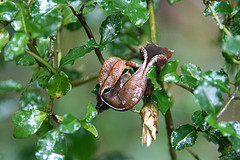
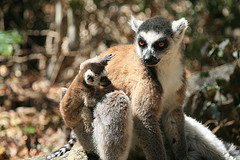
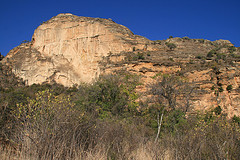



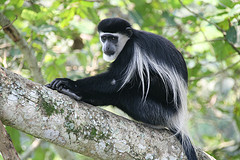

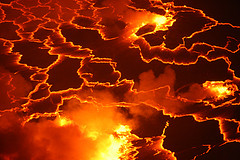
 The major difference between Lamu and Zanzibar is scale – the latter is grander in all facets, from the size of the Stone Town to the size of the houses within it to the width of the alleyways (and, yes, the number of tourists). Zanzibar has more historic non-residential buildings and you can tell that in the heyday of the Swahili Coast, Zanzibar yielded real power while Lamu was always somewhat of a backwater. Some other points in Zanzibar’s favour are sunsets, town beaches – good for watching locals play football and haul in fishing boats – and a wider variety of food. Lamu counters with better fruit juice, a more personal touch (after a couple of days it seems like everyone knows you) and the feeling that you’ve stumbled on a less well-trodden path.
The major difference between Lamu and Zanzibar is scale – the latter is grander in all facets, from the size of the Stone Town to the size of the houses within it to the width of the alleyways (and, yes, the number of tourists). Zanzibar has more historic non-residential buildings and you can tell that in the heyday of the Swahili Coast, Zanzibar yielded real power while Lamu was always somewhat of a backwater. Some other points in Zanzibar’s favour are sunsets, town beaches – good for watching locals play football and haul in fishing boats – and a wider variety of food. Lamu counters with better fruit juice, a more personal touch (after a couple of days it seems like everyone knows you) and the feeling that you’ve stumbled on a less well-trodden path. We spent most of our time in Zanzibar walking around Stone Town, visiting the local markets, and eating seafood pizza at Mercury’s overlooking the beach. Other than this, yesterday we did the virtually obligatory spice/beach tour, which we found OK but not outstanding. A better outing this morning was taking a dalla-dalla (the local converted truck transport) to a beautiful forest to see red colobus monkeys, the spiky-haired version of which lives only on Zanzibar.
We spent most of our time in Zanzibar walking around Stone Town, visiting the local markets, and eating seafood pizza at Mercury’s overlooking the beach. Other than this, yesterday we did the virtually obligatory spice/beach tour, which we found OK but not outstanding. A better outing this morning was taking a dalla-dalla (the local converted truck transport) to a beautiful forest to see red colobus monkeys, the spiky-haired version of which lives only on Zanzibar.